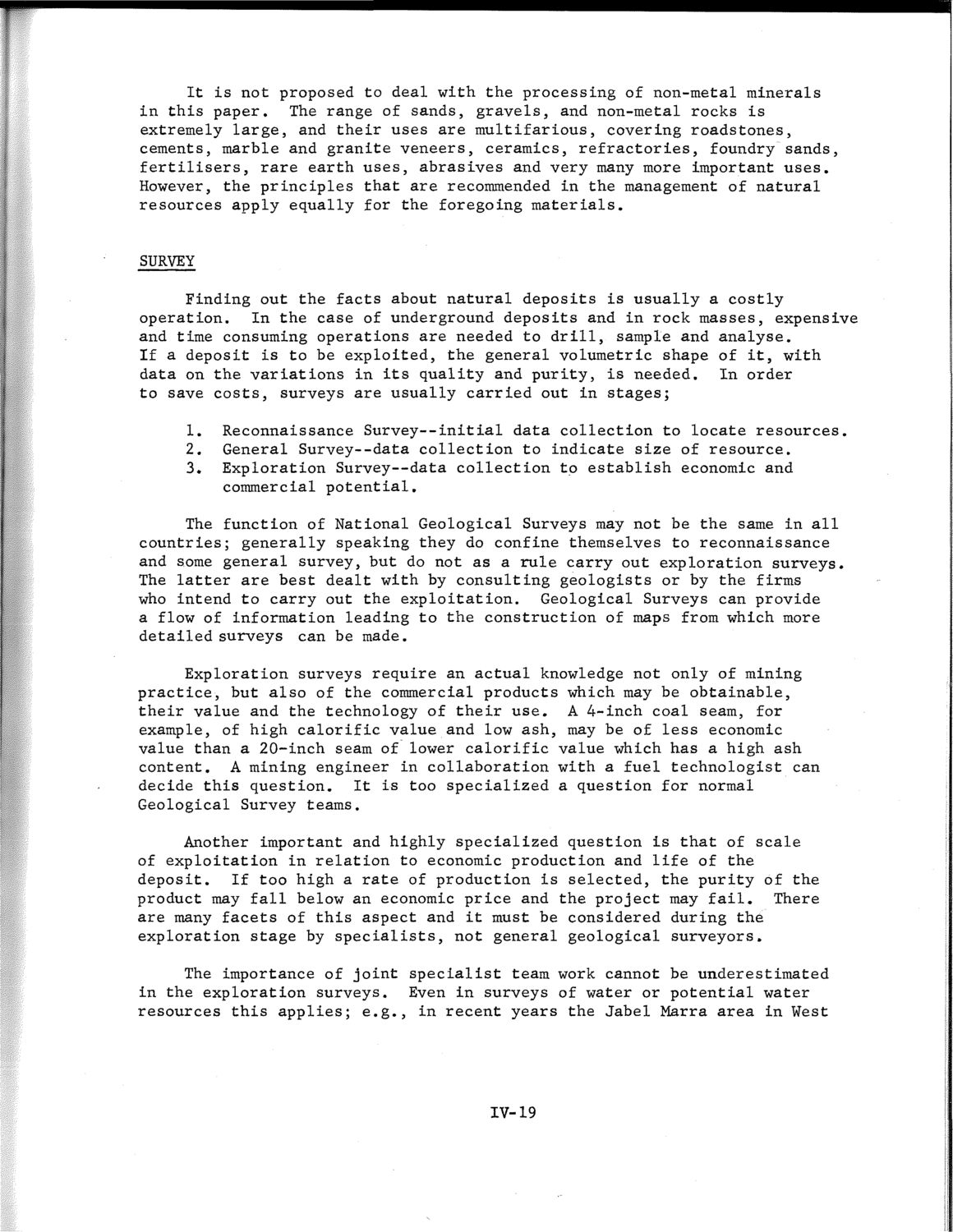| |
| |
Caption: SWE - Proceedings of the First International Conference of Women Engineers and Scientists
This is a reduced-resolution page image for fast online browsing.

EXTRACTED TEXT FROM PAGE:
It is not proposed to deal with the processing of non-metal minerals in this paper. The range of sands, gravels, and non-metal rocks is extremely large, and their uses are multifarious, covering roadstones, cements, marble and granite veneers, ceramics, refractories, foundry sands, fertilisers, rare earth uses, abrasives and very many more important uses. However, the principles that are recommended in the management of natural resources apply equally for the foregoing materials. SURVEY Finding out the facts about natural deposits is usually a costly operation. In the case of underground deposits and in rock masses, expensive and time consuming operations are needed to drill, sample and analyse. If a deposit is to be exploited, the general volumetric shape of it, with data on the variations in its quality and purity, is needed. In order to save costs, surveys are usually carried out in stages; 1. Reconnaissance Survey—initial data collection to locate resources. 2. General Survey--data collection to indicate size of resource. 3. Exploration Survey—data collection to establish economic and commercial potential. The function of National Geological Surveys may not be the same in all countries; generally speaking they do confine themselves to reconnaissance and some general survey, but do not as a rule carry out exploration surveys. The latter are best dealt with by consulting geologists or by the firms who intend to carry out the exploitation. Geological Surveys can provide a flow of information leading to the construction of maps from which more detailed surveys can be made. Exploration surveys require an actual knowledge not only of mining practice, but also of the commercial products which may be obtainable, their value and the technology of their use. A 4-inch coal seam, for example, of high calorific value and low ash, may be of less economic value than a 20-inch seam of lower calorific value which has a high ash content. A mining engineer in collaboration with a fuel technologist can decide this question. It is too specialized a question for normal Geological Survey teams. Another important and highly specialized question Is that of scale of exploitation in relation to economic production and life of the deposit. If too high a rate of production is selected, the purity of the product may fall below an economic price and the project may fail. There are many facets of this aspect and it must be considered during the exploration stage by specialists, not general geological surveyors. The importance of joint specialist team work cannot be underestimated in the exploration surveys. Even in surveys of water or potential water resources this applies; e.g., in recent years the Jabel Marra area in West IV-19
| |